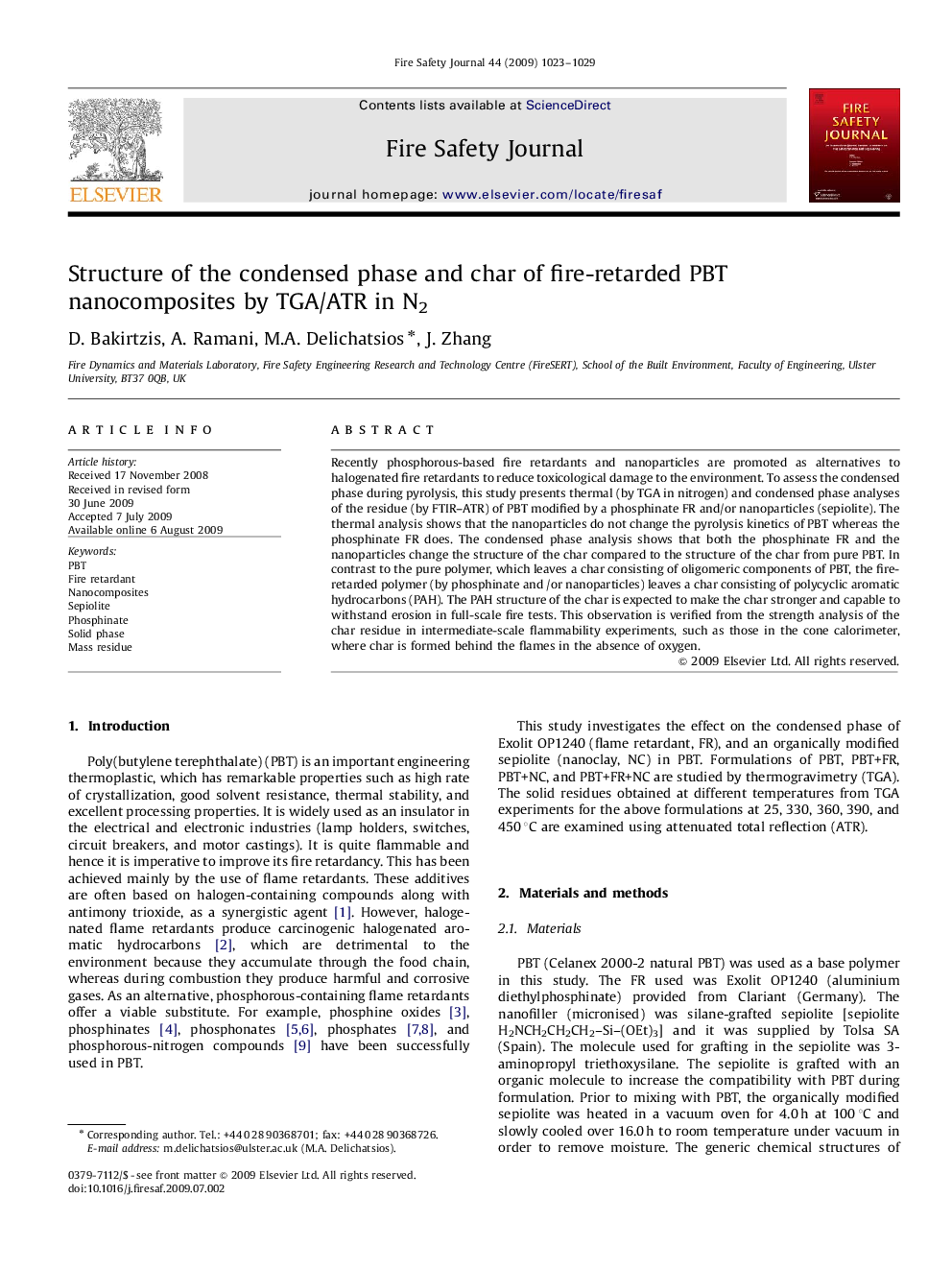| Article ID | Journal | Published Year | Pages | File Type |
|---|---|---|---|---|
| 270244 | Fire Safety Journal | 2009 | 7 Pages |
Recently phosphorous-based fire retardants and nanoparticles are promoted as alternatives to halogenated fire retardants to reduce toxicological damage to the environment. To assess the condensed phase during pyrolysis, this study presents thermal (by TGA in nitrogen) and condensed phase analyses of the residue (by FTIR–ATR) of PBT modified by a phosphinate FR and/or nanoparticles (sepiolite). The thermal analysis shows that the nanoparticles do not change the pyrolysis kinetics of PBT whereas the phosphinate FR does. The condensed phase analysis shows that both the phosphinate FR and the nanoparticles change the structure of the char compared to the structure of the char from pure PBT. In contrast to the pure polymer, which leaves a char consisting of oligomeric components of PBT, the fire-retarded polymer (by phosphinate and /or nanoparticles) leaves a char consisting of polycyclic aromatic hydrocarbons (PAH). The PAH structure of the char is expected to make the char stronger and capable to withstand erosion in full-scale fire tests. This observation is verified from the strength analysis of the char residue in intermediate-scale flammability experiments, such as those in the cone calorimeter, where char is formed behind the flames in the absence of oxygen.
